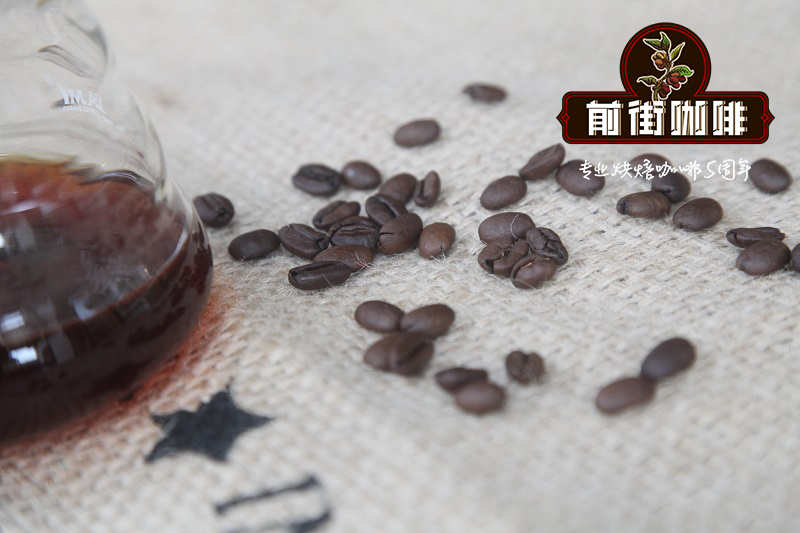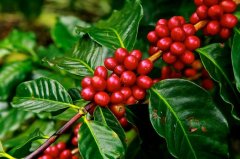The best coffee is in Yunnan? Introduction to the varieties of coffee grown in Yunnan | how about coffee in Yunnan?

Professional coffee knowledge exchange More coffee bean information Please pay attention to coffee workshop (Weixin Official Accounts cafe_style)
The best coffee in China? It is thought that coffee in Yunnan, China has only been cultivated in recent years, but in fact, coffee in Yunnan, China has been cultivated as early as 1892.
Yunnan coffee in China due to unique geographical environment and climatic conditions, formed a strong but not bitter, fragrant but not strong, with a little fruity unique flavor, world-class coffee experts evaluation is the best coffee in the world, its cultivation technology, yield is also world-class.
Coffee is rich in protein, fat, sucrose and starch, caffeine and other substances, made of beverage aroma rich, delicious taste, rich nutrition, thus becoming the world's three major drinks and tea, cocoa composition, and ranked first.
Yunnan coffee is a variation of Arabic original species, after long-term cultivation and domestication, generally known as Yunnan Arabica coffee, has been cultivated for more than 100 years. Why is it the best quality in the world?
Coffee quality is determined by many factors such as the growing environment, climate and cultivation management techniques. Its best growing environment is low latitude, high altitude, sufficient rainfall, suitable sunshine, so between 15 degrees north latitude and Tropic of Cancer is the ideal growth zone for coffee. However, other areas in this zone, such as Hawaii in the United States, Saudi Arabia, etc., or low altitude, or desert with little rain, are not conducive to coffee growth. Only southern Yunnan in this zone has all kinds of conditions.
According to experts, Arabica coffee should be planted in the mountains at an altitude of 800-1800 meters. If the altitude is too high, it tastes sour, and if it is too low, it tastes bitter. Yunnan coffee is mostly planted in dry and hot valley areas at an altitude of 1100 meters, so the acidity is moderate, the flavor is rich and mellow.
As far as climatic conditions are concerned, the long sunshine time in southern Yunnan is conducive to the growth and photosynthesis of plants, and the large temperature difference between day and night and the low temperature at night are conducive to the accumulation of coffee nutrients. Therefore, the effective nutrients contained in Yunnan Arabica coffee are higher than those of other coffee varieties abroad.
Arabica coffee is susceptible to rust, and its yield and quality are greatly affected after rust. Yunnan hot zone due to dry and wet distinct, every year fresh fruit red ripening just into the dry season, low relative humidity, is not conducive to the formation and growth of blister rust.
Yunnan Arabica varieties
Iron pickup truck (typica)
Tiekka coffee is native to Ethiopia and southeastern Sudan and is the most widely cultivated coffee variety in the Western Hemisphere. The plants are more robust, but less tolerant to light, and yield more in Hawaii. The top leaves of iron pickup are red copper, called red top coffee. The tinka is recognized as a fine coffee variety, and many commercial improved varieties are derived from it. The taste is excellent, but the yield is extremely low and susceptible to rust, requiring more manual management.
Bourbon
Bourbon is derived from the iron pickup truck, which was planted by the French in 1708 on Bourbon Island (now known as Reunion Island) and expanded. Bourbon also has a good aroma and rich taste, compared with iron card in the yield and growth force are higher, suitable for planting in 1200- 2000 meters of the area, but the ability to resist pests is weak, and to strong winds and heavy precipitation is more sensitive. Bourbon coffee is the second most common variety of Arabica coffee after iron pickup. The lateral branches and nodes are more dense, the fruit is more, and the yield is higher. But the berries are smaller and ripen slower. Bourbon bud tender leaves are green, called green top coffee;
Catimor
Arabica Catimor is used by the Portugal International Coffee Rust Research Centre (CIFC) for Caturra19/IXHDT832/l (HW26) and Caturra19/IXHDT832/2 (H. 6) A general term for the bred hybrids, which are now distributed in most coffee-producing countries and have been further selected and adapted, resulting in many different generations of Catimor hybrids and Can-mor derivatives. Some of them showed good botanical characteristics and resistance to known rust races, while others were only used as breeding materials. Catimor is the main variety of coffee planted in Yunnan Province, with large planting scale and area.
Kenya SL28
SL28 is a Kenyan hybrid bred to improve disease resistance and yield of coffee. It has a mixed bloodline of French missionary, mocha and Yemeni tibica. Now Yunnan also has introduced SL28 varieties of coffee planting.
India introduced S288
S288 is an excellent hybrid bred in India in 1946. S288 was formerly named S26 after mixing S288 (the first generation) with Typica, because the first generation bean of S288 was crossed by Arabica and Liberica of Liberia, and always had the earthy smell of Liberia. Indian botanists then used the first generation of S288 and Typica hybrid Kent variety and the second generation of S288 hybrid to become the current S795.
Other introduced or cultivated species
In addition to the above introduction, there are many varieties planted in Yunnan that are either introduced or locally cultivated, including many varieties such as Guixia and Yejia Xuefei. And, of course, the Robusta species.
END
Important Notice :
前街咖啡 FrontStreet Coffee has moved to new addredd:
FrontStreet Coffee Address: 315,Donghua East Road,GuangZhou
Tel:020 38364473
- Prev

The largest organic coffee producer in the world-East Timor | the history of coffee development in East Timor
Professional coffee knowledge exchange more coffee bean information please follow the coffee workshop (Wechat official account cafe_style) East Timor, a country located in Asia, usually do not see many coffee beans here, today let's learn about the coffee beans in East Timor! I wonder what kind of surprise the East Timorese coffee will bring us. East Timor is located in the east of Timor Island in Southeast Asia.
- Next

What are the characteristics of delicious coffee beans? What kind of coffee do you recommend?
Professional coffee knowledge exchange more coffee bean information please follow the coffee workshop (Wechat official account cafe_style) this year, all say that know how to drink coffee must drink individual coffee, on the one hand, this is to respect and support the origin of coffee farmers, on the other hand, it is also through a cup of coffee to taste thousands of miles away from the regional characteristics, yes, individual coffee is this god
Related
- Detailed explanation of Jadeite planting Land in Panamanian Jadeite Manor introduction to the grading system of Jadeite competitive bidding, Red bid, Green bid and Rose Summer
- Story of Coffee planting in Brenka region of Costa Rica Stonehenge Manor anaerobic heavy honey treatment of flavor mouth
- What's on the barrel of Blue Mountain Coffee beans?
- Can American coffee also pull flowers? How to use hot American style to pull out a good-looking pattern?
- Can you make a cold extract with coffee beans? What is the right proportion for cold-extracted coffee formula?
- Indonesian PWN Gold Mandrine Coffee Origin Features Flavor How to Chong? Mandolin coffee is American.
- A brief introduction to the flavor characteristics of Brazilian yellow bourbon coffee beans
- What is the effect of different water quality on the flavor of cold-extracted coffee? What kind of water is best for brewing coffee?
- Why do you think of Rose Summer whenever you mention Panamanian coffee?
- Introduction to the characteristics of authentic blue mountain coffee bean producing areas? What is the CIB Coffee Authority in Jamaica?

